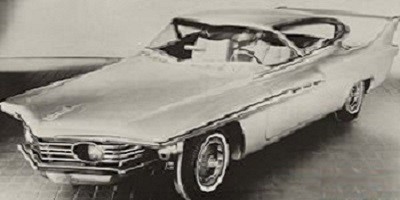By 1963, Chrysler was on track to do what no other carmaker had ever attempted-to make a gas-turbine-engined car and put it into the hands of consumers.

Chrysler Turboflite 1961
- YEAR REVEALED 1961
- PLACE OF ORIGIN Detroit, Michigan, and Turin, Italy
- HISTORICAL STATUS prototype
- ENGINE gas turbine
- MAXIMUM POWER 140bhp
- LAYOUT front-mounted engine driving the rear wheels
- BODYWORK two-door/single-canopy, four-seater coupé
- TOP SPEED unknown
- NUMBER BUILT one
It first installed a gas-turbine engine into a Plymouth in 1954, and two years later felt confident enough to try a “real life” voyage from New York to Los Angeles, driven by Chrysler’s research chief George Huebner. Some 50 further prototypes, and engines for laboratory-testing, were built until company bosses sanctioned the Turboflite.
The Chrysler Turboflite was presented as a showcase for the final CR2A engine-a unit said to weigh half as much as a conventional Chrysler V8, with only 60 moving parts instead of 300. It had been extensively road-tested in a Dodge truck in 1960. The Turboflite’s super-aggressive styling was by Chrysler’s Maury Baldwin, with an enormous airfoil at the back sporting a pivoting lateral blade that was supposed to act as an airbrake to slow the car down.
When either of the two doors were opened, the cockpit canopy automatically raised, using a pair of struts, to admit driver and passengers. A touch of the hot-rod was provided by the exposed front wheels and chrome frontal treatment. Luxuriously plump seating and electro-luminescent mood lighting created an inviting aura. The Turboflite-which probably never ran under its own power-was built to Chrysler’s precise design in Italy by revered coachbuilder Ghia, as a prelude to its manufacture of the Chrysler Turbine bodies.